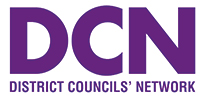Concern has been expressed that taxpayers could count the cost of new mega councils after analysis shows that the existing largest local authorities have the highest council tax bills.
Residents living in council areas with populations of more than 500,000 have an average Band D council tax of £2,009 while those with smaller populations have bills of £1,759 – a £250 difference.
The analysis by the District Councils’ Network (DCN) comes as the Government prepares to sweep away existing local government structures, merging county and district councils to create new unitary authorities.
Ministers have said these will have typical populations of half a million people, leading to concerns that ‘mega councils’ are being created – far from local people and less responsive to the unique needs of local communities and businesses. DCN is calling for new unitary councils to remain close to communities.
Cllr Sam Chapman-Allen, Chair of the District Councils’ Network, said: “We’re told that reorganisation should cut costs, but the evidence shows huge unitary councils, like those the Government envisages, land their residents with bigger council tax bills.
“It’s essential that reorganisation offers local taxpayers value – but this will not be achieved simply by creating large councils in the hope of shaving off some management costs. Our aim should be to radically reform the way we deliver local public services to improve their effectiveness and efficiency.
“New councils should be close enough to each village, town and city to have the local insight that can prevent the ill health and social problems that cost the taxpayer dear if allowed to escalate. This highly localised knowledge can deliver jobs and growth.”
The Government has admitted it has undertaken no analysis of the financial impact of reorganising councils. However, DCN’s analysis offers new insight about the much higher council tax bills issued by existing ‘mega’ unitary authorities. All bands of council population size less than 500,000 had lower bills than those above it.
| Population size of unitary council | Average Band D council tax bill |
| 100-200k | £1,815 |
| 200-300k | £1,766 |
| 300-400k | £1,690 |
| 400-500k | £1,895 |
| 500-600k | £2,050 |
| 600k + | £1,922 |
When the number of Band D homes within each population band is considered, the gap in bill between councils with populations of under 500k and those with populations over it totals £250.08.





